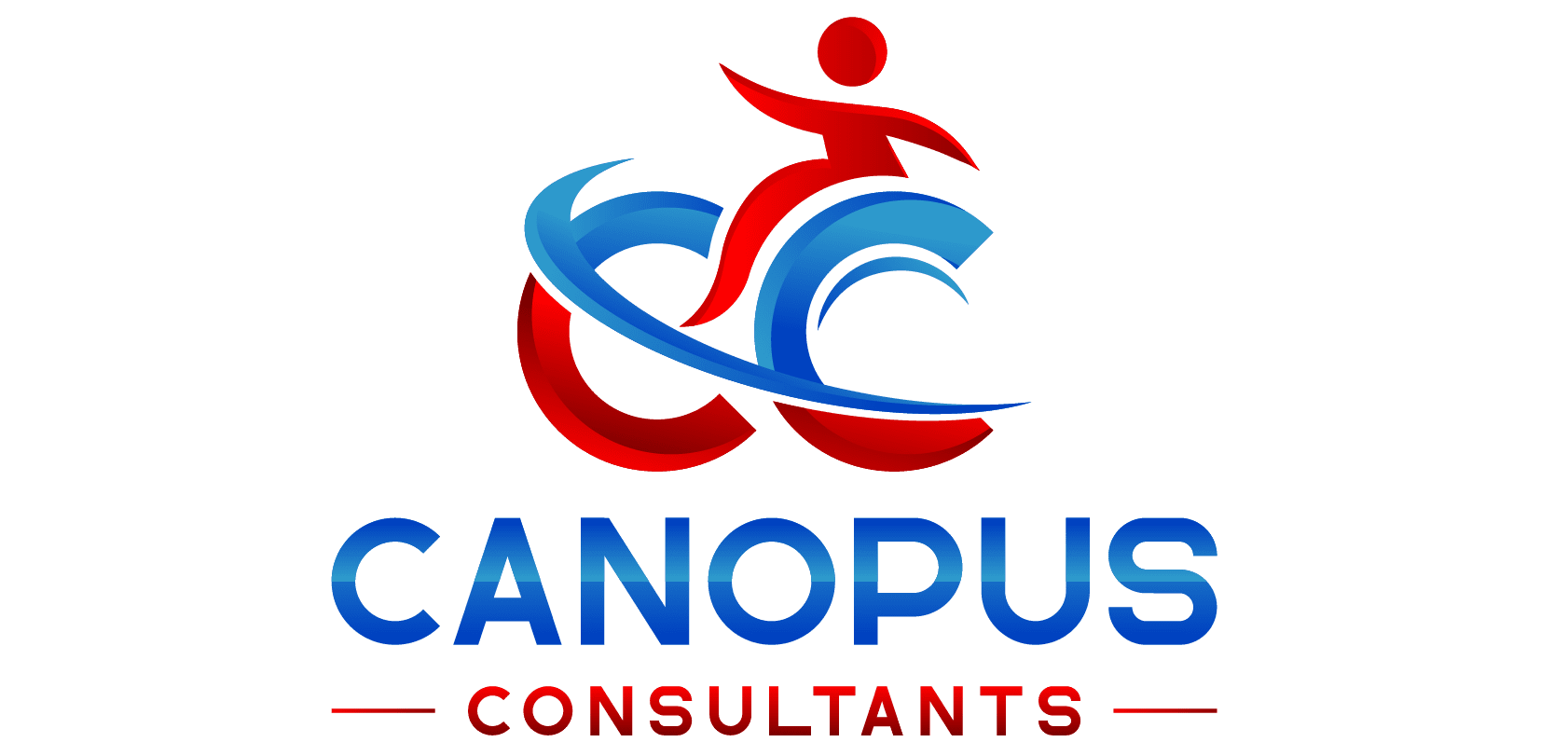
5 Steps to Passing Your NDIS Audit: Ensuring Compliance and Excellence in Disability Services
If you are a disability service
provider in Australia looking to become registered under the National Disability
Insurance Scheme (NDIS), you will need to pass the NDIS audit. This audit is a
crucial step in demonstrating your compliance with the NDIS Quality and
Safeguards Commission (NDIS Commission) requirements and ensuring the delivery
of high-quality services to individuals with disabilities. To help you navigate
the audit process successfully, here are five key steps to prepare for and pass
your NDIS audit.
1. Familiarise Yourself with the NDIS Commission Requirements
To successfully navigate the
registration process and ensure the delivery of high-quality services, it is
crucial to thoroughly understand the NDIS Commission’s requirements and
expectations. Here are some key points to consider when familiarizing yourself
with the NDIS Commission requirements.
·
NDIS Quality and Safeguarding Framework
The NDIS Quality and
Safeguarding Framework sets out the principles and requirements that providers
must adhere to in order to deliver safe and high-quality services to NDIS participants.
It outlines the NDIS Commission’s regulatory approach and its expectations for
service delivery.
·
NDIS
Practice Standards
The NDIS Practice Standards are
another important aspect to understand. These standards provide a set of
benchmarks that service providers must meet to ensure participants receive
quality supports and services. They cover various areas, including governance
and operational management, rights and responsibilities, provision of supports,
responsiveness, and the safety and wellbeing of participants.
·
Verification and Certification
Requirements
Depending on your
organization’s size and the services you offer, you will need to meet either
the verification or certification requirements. Verification is conducted
against the NDIS Practice Standards, while certification is conducted against
the Human Services Quality Framework (HSQF). Understanding which set of
requirements applies to your organization is crucial for ensuring compliance
during the audit.
·
Core Registration Requirements
In addition to the NDIS
Commission requirements, there are certain core registration requirements that
all service providers must meet. These requirements include having appropriate
insurances, maintaining national police check for relevant staff, and meeting
relevant occupational health and safety laws. Familiarize yourself with these
core requirements and ensure your organization complies with them.
·
Additional Guidance and Support
The NDIS Commission provides
additional guidance and support to help service providers navigate the
registration process. This includes guidelines, fact sheets, and other
resources that provide detailed explanations of the requirements and
expectations. Utilize these resources to gain a deeper understanding of the NDIS
Commission’s requirements and their implications for your organization.
2. Conduct a Gap Analysis and Develop an Action Plan
Before the audit, it is
essential to conduct a comprehensive gap analysis to identify areas where your
current practices may not align with the NDIS Commission’s requirements. This
analysis will provide you with valuable insights and help you develop an action
plan to address any gaps and ensure compliance. Here are some key steps to
follow when conducting a gap analysis and developing an action plan.
·
Identify Current Practices and Policies
Document your organization’s
existing practices, policies, and procedures. This includes reviewing your
policies related to areas such as service delivery, risk management, incident
reporting, complaints management, and staff training. Identify any gaps between
your current practices and the NDIS Commission’s requirements. This can involve
comparing your policies and procedures against the specific standards outlined
in the practice standards or certification standards.
·
Conduct a Gap Analysis
Analyze the gaps identified
during the review process. Evaluate the significance and potential risks
associated with each gap. Consider the impact that these gaps may have on the
quality of service delivery, participant safety, and compliance.
·
Develop an Action Plan
Based on the results of the gap
analysis, develop a detailed action plan to address and rectify the identified
gaps. Your plan should include specific actions, responsible individuals,
timelines, and key performance indicators (KPIs).
·
Monitor, Review, and Improve
Implement your action plan and
consistently monitor progress towards achieving the desired outcomes. Regularly
review and reassess your practices, policies, and procedures to ensure ongoing
compliance and continuous improvement. Recognizing achievements and milestones
is important to maintain team motivation and morale.
3. Implement Quality Management Systems
Implementing a robust quality
management system (QMS) is crucial for disability service providers in
Australia to ensure the delivery of high-quality services and meet the
requirements of the National Disability Insurance Scheme (NDIS) Quality and
Safeguards Commission (NDIS Commission). A well-designed QMS provides a
framework for consistent practices, continuous improvement, and adherence to
regulatory standards. Here are some key steps to consider when implementing a
QMS for your organization.
·
Understand the Requirements
Thoroughly familiarize yourself
with the NDIS Commission’s requirements and the specific practice standards or
certification standards that apply to your organization’s registration
category. Understand the expectations and benchmarks you need to meet to
demonstrate compliance. This understanding is essential for determining the
scope and components of your QMS.
·
Define the Scope and Objectives
Clearly define the scope of
your QMS, considering the services you provide, the processes involved, and the
areas of your organization that will be covered. Establish the objectives of
your QMS, ensuring they align with your organization’s overall mission, vision,
and values. These objectives can include improving service quality, enhancing
participant satisfaction, and promoting continuous improvement.
·
Develop Policies and Procedures
Develop comprehensive policies
and procedures that reflect the NDIS Commission’s requirements and best
practices in disability services. These policies should cover all relevant
areas, including service delivery, riskmanagement, incident reporting,
complaints management, human resources, and training and development. Ensure
that your policies are clear, consistent, and aligned with relevant legislation
and standards.
Establish Quality Metrics
and Key Performance Indicators (KPIs)
Define quality metrics and KPIs
to monitor the effectiveness and performance of your QMS. These indicators can
include measures such as participant satisfaction levels, incident response
times, staff training completion rates, and compliance with regulatory
requirements. Regularly monitor and review these metrics to identify areas for
improvement and drive continuous improvement initiatives.
·
Conduct Audits and Reviews
Regularly conduct internal
audits and reviews of your QMS to assess its effectiveness and identify areas
for improvement. These audits can be conducted by internal staff or external
consultants with expertise in QMS implementation and compliance. Use the audit
findings to drive corrective actions and make necessary adjustments to your
processes and procedures.
·
Continuously Improve
Maintain a culture of
continuous improvement within your organization by encouraging and implementing
feedback mechanisms. Actively seek input from participants, staff members, and
other stakeholders to identify areas for enhancement. Regularly review and
update your policies, procedures, and processes based on industry best
practices and changes in regulatory requirements.
·
Seek External Certification
Consider seeking external
certification for your QMS, such as ISO 9001, as a way to demonstrate your
organization’s commitment to quality and adherence to international standards.
External certification can enhance your reputation and instil confidence in
your services among participants, stakeholders, and funding bodies.
4. Train and Educate Your Staff
To provide high-quality support
to individuals with disabilities and meet the requirements of the National
Disability Insurance Scheme (NDIS) Quality and Safeguards Commission (NDIS
Commission), it is crucial to invest in training and education for your staff.
By equipping them with the necessary skills and knowledge, you empower them to
deliver exceptional care and achieve positive outcomes for participants. Here
are some key reasons why training and educating your staff is vital and how to
effectively implement this process.
·
Enhancing Skills and Knowledge
By providing them with ongoing
learning opportunities, you equip them with the tools they need to perform
their roles effectively. This includes training on person-centered care,
disability awareness, communication skills, behavior management, and specific
therapeutic techniques. Through continuous learning, your staff can stay
updated with industry best practices and contribute to the overall improvement
of service delivery.
·
Empowering
Staff
By offering training and
education, you can boost staff morale, engagement, and job satisfaction. This
can contribute to a positive work culture, increased retention rates, and
higher levels of motivation among your team members. Empowered staff members
are more likely to take ownership of their work, display initiative, and
provide person-centered care that meets the unique needs of participants.
·
Ensuring Compliance
Staff members need to be
familiar with the specific policies, procedures, and guidelines that govern
disability services. Training programs should cover areas such as occupational
health and safety, mandatory reporting, privacy and confidentiality, and the
rights of participants. Keeping staff updated on the latest regulatory changes
helps mitigate risks and maintain a safe and compliant environment.
·
Improving Participant Outcomes
Well-trained and knowledgeable
staff contribute to improved participant outcomes. When staff members possess
the necessary skills and knowledge, they can effectively engage with
participants, build trust-based relationships, and provide tailored support.
Training on person-centered care ensures that participants’ individual needs,
preferences, and aspirations are at the forefront of service delivery.
·
Customising Training Programs
To ensure the effectiveness of
training and education, it is important to customize programs to suit the
unique needs of your staff and organization. Conducting a training needs
analysis can help identify areas where skill development is needed the most.
Seek input from staff members, participants, and supervisors to gain insights
into their training priorities and areas for improvement. Develop a training
plan that considers the diverse roles within your organization, ensuring that
each staff member receives relevant and practical training.
5. Conduct Internal Audits and Mock Assessments
Conducting internal audits and
mock assessments is a crucial step towards achieving this goal. By regularly
evaluating and reviewing your organization’s practices, policies, and
procedures, you can identify areas for improvement, ensure compliance with
regulatory requirements, and continuously enhance the quality of care and
support provided to individuals with disabilities.
Implementing Internal Audits and Mock Assessments
To effectively implement
internal audits and mock assessments in your organization, follow these key
steps:
·
Define Objectives and Scope:
Determine the objectives of
your internal audits and mock assessments. This may include ensuring compliance
with regulatory requirements, identifying areas for improvement, and enhancing
the quality of services. Define the scope of your audits, such as specific
service areas, processes, or locations to be assessed.
·
Develop Audit Criteria:
Establish clear criteria
against which your organization’s practices and processes will be evaluated.
This may include industry standards, regulatory requirements, best practices,
and your organization’s own policies and procedures. Document these criteria to
ensure consistency and provide a clear roadmap for the audits.
·
Plan and Schedule Audits:
Develop an audit plan,
outlining the frequency, schedule, and resources required for conducting
internal audits and mock assessments. Consider assigning dedicated staff
members or a team responsible for carrying out the audits. Create a schedule
that encompasses all relevant areas, ensuring that audits are conducted at
regular intervals.
·
Conduct Audits and Assessments:
Execute the audit plan as
scheduled. During the audits, evaluate your organization’s processes, policies,
procedures, documentation, and staff practices against the established
criteria. This may involve reviewing records, interviewing staff members, and
observing service delivery. Document your findings and observations throughout
the audit process.
·
Analyze Findings and Take Corrective Actions:
Analyze the findings from your
audits and mock assessments. Identify any areas of non-compliance,
inefficiencies, or potential risks. Create an action plan to address these
issues, assigning responsibility and setting timelines for corrective actions.
Ensure that corrective actions are monitored and implemented effectively.
·
Review and Monitor Progress:
Regularly review and monitor
the progress of corrective actions and the overall effectiveness of your
internal audit and mock assessment processes. Use this feedback loop to drive
continuous improvement within your organization, making necessary adjustments
and refinements based on the insights gained through audits.
·
Document and Communicate:
Document the results of your
internal audits and mock assessments, along with the actions taken to address
any identified issues. Share this information with relevant staff members,
management, and stakeholders. Communicate the outcomes and improvements
achieved through the audit process, demonstrating your organization’s
commitment to quality and compliance.
- March 10, 2024
- By: hello@cre8tivebot.com.au
- Categories: Blog
- no comments
- Tags: 5 Steps to Passing Your NDIS Audit, Ensuring Compliance and Excellence in Disability Services, ndis audit, ndis auditing australia


